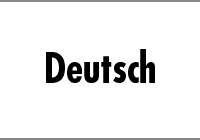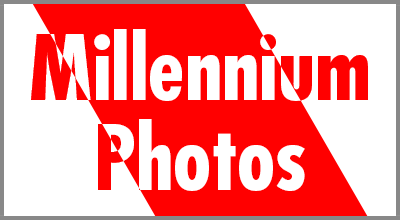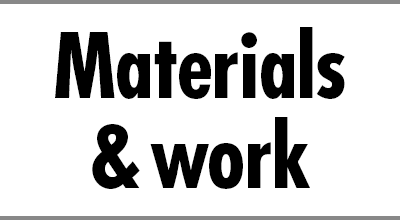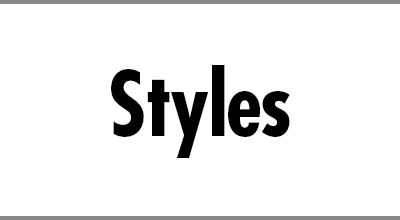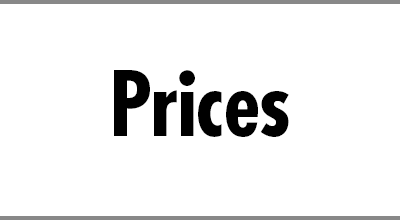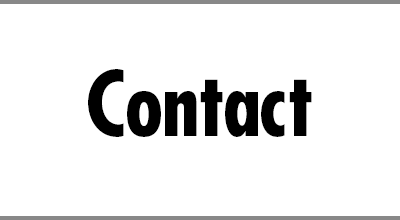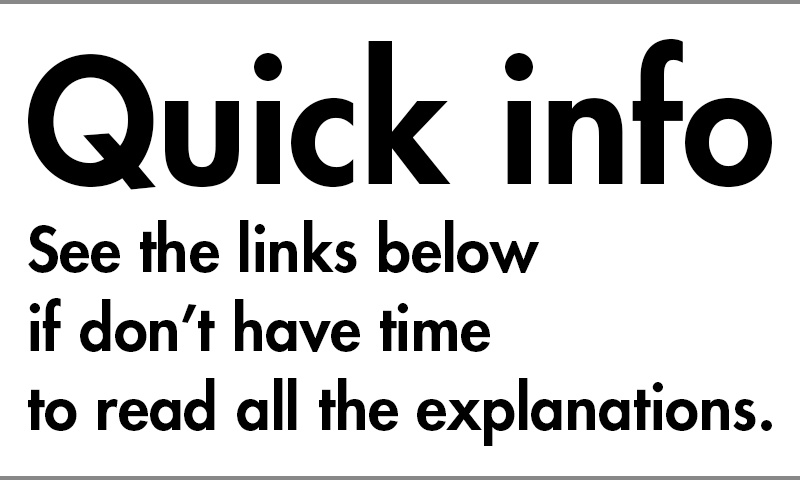The following is a general method of installing Millennium Photo and Stainless Photo products on places such as walls.
We are not architecture experts, and therefore cannot provide advice on the optimal installation method for various different types of wall surface material. If you cannot decide on the installation method, please ask the vendor who built your home or a hardware store to install the Millennium Photo.
We will provide as much information as necessary on Millennium Photo products themselves for customers to determine installation methods through consultations with an installation vendor.
We can refer you to our partner companies, depending on where you live.
Round holes plus bolts
This can be used for flat types and white frame type products.
Create holes in the Millennium Photo or Stainless Photo product as well as the wall surface on which the product is be fixed, and use nuts in fixing the products by passing bolts through the holes. This method is suitable for wall surfaces indoors and can firmly fix products there. However, this method requires a relatively longer period of time and a large amount of work because it is necessary to use nuts to tighten the product from the reverse side of the wall surface, to embed nuts such as insert nuts and claw nuts, or to use washer-based nuts.
While it is possible to use any types of bolt, we recommend bolts and nuts of ¼ size (equivalent to M6) or larger, in order to maintain strength in fixing the product to the wall.
If you do not want bolts to be easily seen, such as general hexagon bolts, you can use screws with extremely low heads to reduce the protruding part of the head part. Please use stainless steel bolts.
Round holes plus wood screws (or tapping screws)
These can be used for flat types and white frame type products.
These are suitable for fixing products to wooden walls, pillars and horizontal pieces of timber inside Japanese-style homes. Please avoid using this method for plaster boards.
Since this method does not require tightening using nuts on the wall surface side, it is not necessary to plan a major job or to use special tools and techniques.
In general, the maximum size of wood screws is approximately ¼; however, for large-sized products, we recommend to use as large wood screws as possible in order to maintain strength in fixing a product to a wall.
In this method, obvious screw holes are left behind after the product is removed, and the fixing strength is less than that with round holes plus bolts.
Please use stainless steel wood screws.
If the installation site is made of metal and the product is relatively small in size (for flat-type products, this is less than 12.6 × 16.5 inches (32 × 42 cm)), you can also attach it with tapping screws.
Round holes plus anchor bolts
This is the strongest installation method for permanent fixation. It is the optimum method for placing flat type or white frame type products outdoors, such as on gravestones. Either metallic anchors or chemical anchors can be used for anchor bolts. Hollow anchors or Kaberock and other items can be used for plasterboards.
For details, please ask your nearby hardware store.
Keyholes plus bolts
This is the standard installation method for products of the double-sided J-shaped type, the single-sided J-shaped type and the double-sided J-shaped framed type.
This is a highly convenient installation method with which it is possible to flexibly switch between a product being movable and fixed in place, in that a product can be firmly fixed in place with the bolts tightened, or can be hung without tightening the bolts so that it is easy to move it.
Hexagonal or other bolts are fixed into a wall, leaving them protruding out from the wall by slightly more than the thickness of the plate.
Keyholes are drilled into the Millennium Photo or Stainless Photo. Align the positions of the bolt centers and the centers of the thin part of the keyhole.
The bolt heads pass through the larger parts of the keyholes, the small parts of the keyholes will catch the bolt shaft parts, the hang the product with the bolt heads.
If necessary, wrenches or other tools can be inserted through the side space to tighten the bolts and completely fix the product. In such a case it would be a good idea to place spring washers between them.
The standard sizes of keyholes are shown on the right for processing.
We will follow drawings, if provided. In the same way as round holes and bolts, it is necessary to embed claw nuts or insert nuts or to use washer-based nuts; therefore, a considerable amount of work is required to do this.
Bolts of any standard can be used; however, we recommend bolts and nuts with sides greater than ¼ in order to maintain the strength of fixation. Please use stainless bolts and stainless steel nuts.
Countersink and countersink screws
These can be used for flat type products. Holes are drilled into a plate which is directly fixed to a wall using screws; however, countersink screws are used to align the screw head with the surface of the plate, so the screws cannot be easily seen because they do not protrude. This method is suitable for those who would like to avoid products giving a rough impression due to bolts in the display. However, since screws cannot be hidden, plus-shaped screw heads are exposed. This method is suitable for wooden walls. Since the countersink screws are thinner than hexagon bolts, countersunk screw fixation is not as strong as that with the method using round holes and bolts. This method cannot be used for large sizes.
Hyper Pin S
This method is only used for the wall surface base of plasterboard products. Since the fixation with this method is weak, it is only for temporary fixation.
This method can be used for products of the double-sided J-shape type, the double-sided J-shape frame type and the floating type. Special fixation parts which drive two spikes into a wall come together with the product free of charge upon request.
Use thin pins to improve strength. This method will leave smaller holes than large nails, and is; therefore, suitable for temporary fixation.
Installation is simple. The pins can be inserted into a wall by manually pressing them. A product can be installed by simply hanging it with the pins catching keyholes.
In order to properly install a product, it is necessary for the position of the pins to be aligned with the positions of the keyholes, and it is, therefore, important to pay sufficient attention to gaps and the alignment level.
Since with this method the product is simply hung on the protrusion of a plastic component, the product can easily fall off in the case of an earthquake or collision.
It is important to note that this method is only for temporary use.
Nail fixation
This method is used to hang a product on nails hammered to a wall, and can be used for temporary fixation; however, the product may fall off.
This method can be used for products of the double-sided J-shape type, the double-sided J-shape frame type and the floating type.
Wires
It is possible to hang a product from a wire tied, e.g. to a rail.
This method can be used for products of the double-sided J-shape type, the double-sided J-shape frame type and the floating type.
In the case of products of the double-sided J-shape type and the double-sided J-shape frame type, images tend to face downwards when the wire hook is simply caught in the holes. In order to adjust the angle, it is necessary to place a base on the reverse side of the plate at its bottom part which faces the wall to raise and lift the part in the same way as the wire hook.
String suspension
This method can be used for the products of the double-sided J-shape type, the double-sided J-shape frame type and the floating type.
In the case of string suspension, in general, nails or hooks are fixed on a wall from which a product is to be hung using a rope. In order to avoid the marks of nails being easily seen, we recommend using J-hooks. However, please note that with this string suspension method, a product may fall in the case of an earthquake or other similar event.
Embedding
A product can be embedded by fixing its circumference using concrete or other material. For details please ask your nearby hardware store.
Adhesive agents and adhesive tapes
It is possible to temporary fix a product using adhesive agents or double-sided sticky tape. However, the fixation length and strength with this method are very low.





